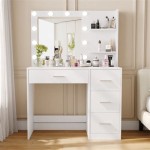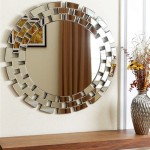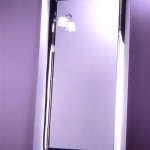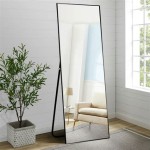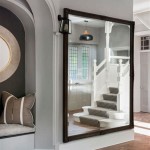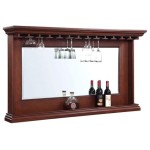Can You Hang Mirrors On Opposite Walls?
The placement of mirrors within a space significantly impacts its perceived size, brightness, and overall ambiance. Positioning mirrors on opposing walls, a common design query, introduces a unique set of considerations ranging from stylistic implications to practical limitations.
Key Considerations for Opposite Mirror Placement
- Visual Infinity Effect
- Light Amplification
- Potential for Disorientation
- Stylistic Impact
- Space Characteristics
- Mirror Size and Shape
The most striking effect of placing mirrors on opposite walls is the creation of a seemingly infinite reflection. This visual illusion occurs as each mirror reflects the other, creating a receding tunnel of images. This can be a powerful design tool, adding depth and drama to a space, particularly in narrow hallways or smaller rooms. However, this effect should be implemented thoughtfully. Overuse can create a disorienting or unsettling atmosphere, especially in larger areas.
Mirrors are well-known for their ability to amplify natural light. Strategically placing them opposite one another can maximize this effect, bouncing light back and forth across the room. This is particularly beneficial in spaces with limited natural light sources, brightening the area and creating a more welcoming environment. Careful consideration should be given to the position of windows and other light sources to optimize reflection and avoid excessive glare.
While the infinite reflection can be an intriguing visual element, it can also be disorienting for some individuals. The repetitive imagery can create a sense of unease or vertigo, particularly in spaces where individuals spend extended periods. This effect should be avoided in spaces intended for relaxation or concentration, such as bedrooms or home offices.
Stylistic Implications of Opposite Mirrors
- Modern and Contemporary Styles
- Traditional and Classical Styles
- Balancing the Effect with Other Decor
The use of opposing mirrors can complement various design aesthetics. In modern and contemporary interiors, the clean lines and reflective surfaces can enhance the minimalist aesthetic, emphasizing spaciousness and light. However, in more traditional or classical settings, this approach might appear jarring. The infinite reflection can clash with ornate furniture or detailed wall treatments. The stylistic context should always be carefully considered.
The size and shape of the room play a crucial role in determining the suitability of placing mirrors on opposite walls. In narrow spaces, such as hallways or corridors, this technique can create an illusion of width, making the space feel less confined. Conversely, in larger rooms, the effect can be overwhelming, leading to a visually cluttered environment. Careful assessment of the room's dimensions is essential for achieving the desired effect.
Practical Considerations for Hanging Mirrors
- Wall Space and Dimensions
- Mirror Weight and Hanging Hardware
- Safety Precautions
The size and shape of the mirrors themselves also factor into the overall effect. Large, rectangular mirrors amplify the infinite reflection more dramatically than smaller, irregularly shaped mirrors. The choice of mirror shape and size should align with the desired visual impact and the overall design scheme. Round or oval mirrors can soften the effect, while square or rectangular mirrors enhance the linear perspective.
Before hanging mirrors, especially large ones, it is vital to assess the wall space. Accurate measurements ensure the mirrors are properly aligned and spaced. Consideration should also be given to the surrounding furniture and decor to maintain visual balance and avoid overcrowding. The distance between the mirrors will also affect the strength of the infinite reflection effect.
Mirrors, particularly larger ones, can be substantial in weight. Utilizing appropriate hanging hardware and ensuring proper installation are crucial for safety. Consult manufacturer guidelines for recommended hanging methods and weight limits. Professional installation is recommended for exceptionally large or heavy mirrors to mitigate the risk of damage or injury.
Safety should always be a primary concern when working with mirrors. Wear appropriate protective gear, such as gloves and eye protection, during installation. Dispose of broken glass or damaged mirrors carefully, following recommended safety procedures. If using adhesive-backed mirrors, ensure the adhesive is suitable for the wall surface and follow the manufacturer's instructions meticulously.
Finally, the reflection itself should be considered. What will the mirrors be reflecting? A cluttered or unattractive view will be amplified, negating the positive aspects of the mirror placement. The reflected view should enhance the space, showcasing appealing features or adding visual interest.

How To Hang A Mirror Guide On Hanging Mirrors
The Do S And Don Ts Of Hanging Pictures Mirrors
:strip_icc()/Design_CathieHongInteriorsPhoto_ChristyQPhotography-1f0a7254eb7a435aa80046b0bf60d33b.jpg?strip=all)
10 Feng Shui Rules For Mirrors According To Experts

Where To Place A Mirror On The Wall
:strip_icc()/KatherineCarterDesign-3f8b299498274f03953732ece7b6e188.jpg?strip=all)
10 Feng Shui Rules For Mirrors According To Experts

Mirror Wall Opposite A Wood Panel For Foyer Walk In Living Room Design Decor
:strip_icc()/Designer_KatieHackworthPhotographer_BelatheePhotography1-5ec16af89e9242cabd3c637c7eb23d4b.jpg?strip=all)
10 Feng Shui Rules For Mirrors According To Experts
:strip_icc()/LightDwell-3095c5279d0b4511b10d154f3a21a9b7.jpg?strip=all)
10 Feng Shui Rules For Mirrors According To Experts
:strip_icc()/ReagenTaylorPhotography-16b1862fe1a64cefbae8671e1453c2e7.jpg?strip=all)
10 Feng Shui Rules For Mirrors According To Experts

Where To Hang Mirrors According Feng Shui Better Homes And Gardens



